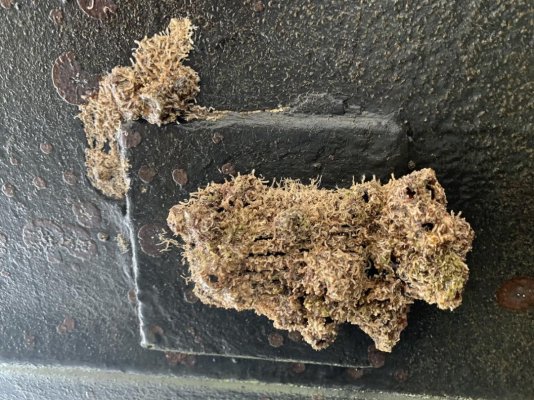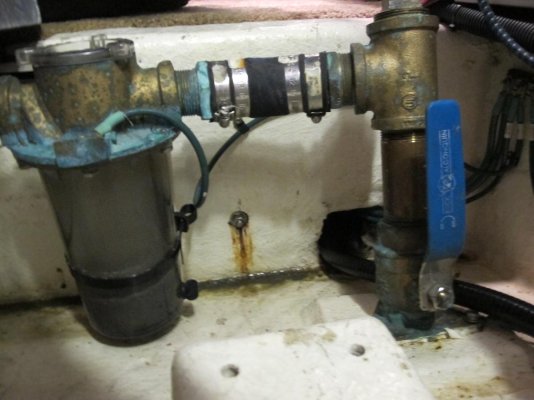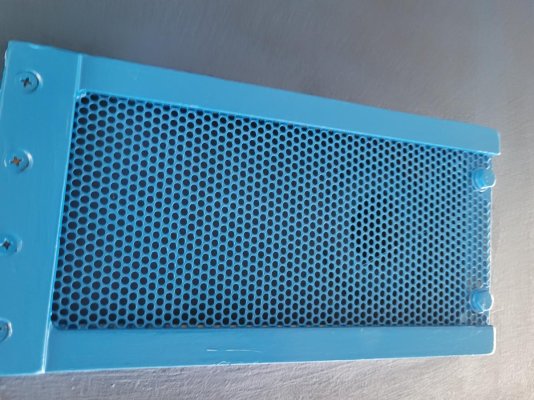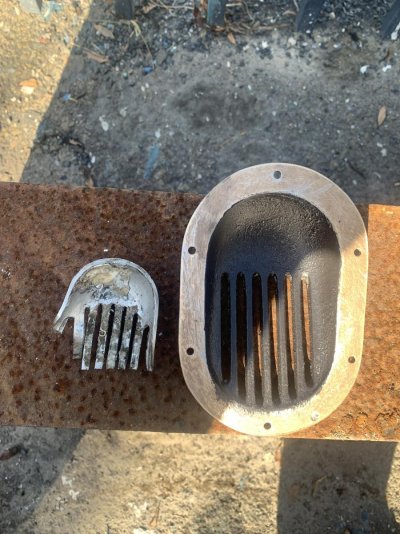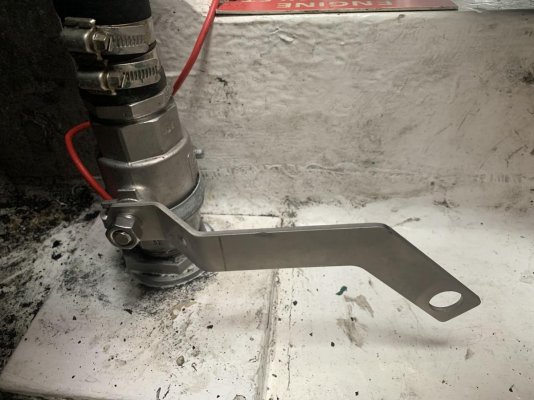Kit_L
Senior Member
- Joined
- Mar 12, 2016
- Messages
- 476
- Location
- Australia
- Vessel Name
- Suu Kyi
- Vessel Make
- Custom 40' catamaran
We came down from the marina the day before yesterday in moderately confused seas, so we decided on semi-planing mode for comfort (3,250 rpm and around 15kn), and 40 minutes into the journey, we noticed that the starboard engine was running at 195°F, and the port at the usual 175°F. We slowed to 2,250 rpm, and temps stabilised.
We slipped yesterday and we found that a mixture of creatures including coral had almost completely covered the starboard engine's intake. You can just see a few of the slots that these strainers have (arranged longitudinally along the hull lines, so left to right in this image), but this one was almost completely blocked. We'll definitely be replacing the impeller on that side...
The reason for slipping is to replace all the through-hulls and sea-cocks and eliminate an extraneous one, but the question remains:
is diving on the hulls and making sure the slots are clear the only way to make sure they are clear?
We will be anti-fouling the insides of the new strainers (and the insides of the internal parts of the skin fittings), which was something we could not do with the present ones—they are one-piece, with the internal parts screwing into the strainers; terrible design.
All suggestions appreciated!
We slipped yesterday and we found that a mixture of creatures including coral had almost completely covered the starboard engine's intake. You can just see a few of the slots that these strainers have (arranged longitudinally along the hull lines, so left to right in this image), but this one was almost completely blocked. We'll definitely be replacing the impeller on that side...
The reason for slipping is to replace all the through-hulls and sea-cocks and eliminate an extraneous one, but the question remains:
is diving on the hulls and making sure the slots are clear the only way to make sure they are clear?
We will be anti-fouling the insides of the new strainers (and the insides of the internal parts of the skin fittings), which was something we could not do with the present ones—they are one-piece, with the internal parts screwing into the strainers; terrible design.
All suggestions appreciated!

